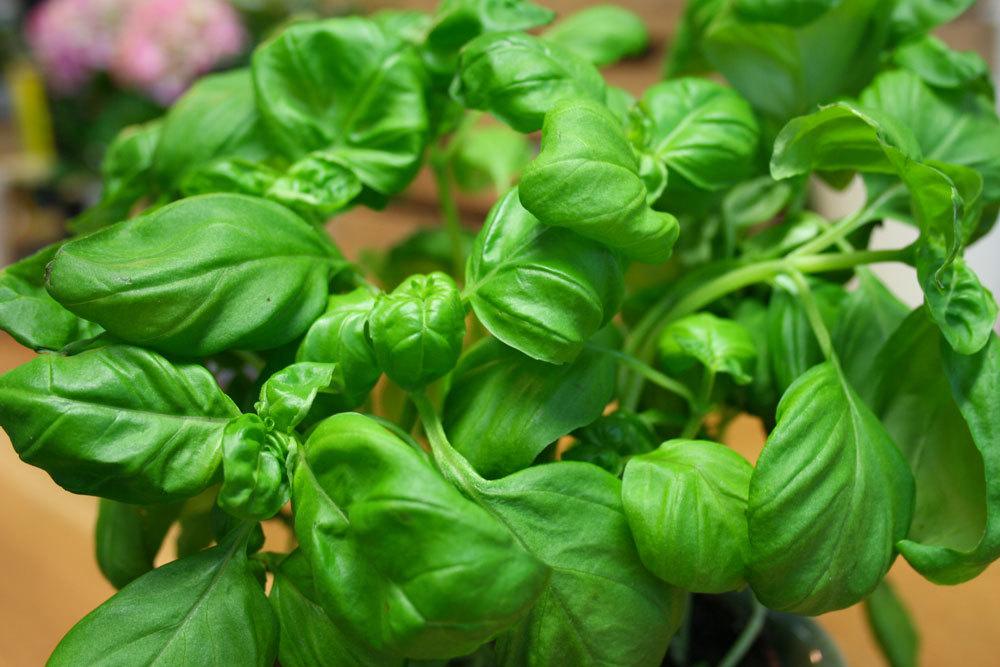Also known as royal herb, it is a versatile spice plant and indispensable not only in Italian cuisine. However, it is not one of the most robust plant species when it comes to location. How much sun can basil actually tolerate?
- aromatic herb with edible flowers and leaves
- grows strongly branched and becomes up to 60 cm high
- coloration and aroma vary depending on the variety
- basil (Ocimum basilicum) is not a Mediterranean plant
- too intensive sunlight is problematic
Contents
A herb in love with the sun
It is one of the classics among kitchen herbs. In domestic gardens and on balconies is grown mostly common basil. Most important in cultivation are water supply and a warm and bright location. Basically, all basil species are heat-loving and sun-loving, but not without restrictions. Too much sun or too intense sunlight can quickly burn or sunburn the delicate leaves of basil. Therefore, a bed is often not the right place, more recommendable are keeping in a pot and a place outdoors.
Tip: Plants from the supermarket usually last only a very limited time, which is rarely due to too much or too little sun.
Tolerable dose
Basically, plants with thin and soft leaves, like the mullein, are more sensitive to heat than those with hard and leathery leaves. If it is exposed to intense sunlight, especially during midday, it can quickly suffer sunburn. Ideally, basil should be placed in a spot with at least six hours of sun per day during the summer.
- Do not place royal herb in a pot directly in front of a south-facing wall.
- Consequences would be heat accumulation and dry damage
- place smaller pots in a half-shaded place on particularly hot days
- in the apartment a sunny place on the window sill
- with protection from the blazing midday sun
- avoid a south-facing window as much as possible
- outdoor specimens are much more robust
- danger of sunburn even after overwintering
- therefore do not expose plants directly to the sun
- first slowly get used to sunlight
- no earlier than mid/end of May outdoors
The acclimatization phase takes about two to three weeks. Initially, the plants should be placed in partial shade. After a few days, basil can be exposed to sunlight in the morning and evening. As soon as temperatures drop below 15 degrees, specimens in pots should move indoors.
Note: In addition to sufficient light, Ocimum basilicum requires a deep, nutrient-rich soil with a pH of 6.5 to 7.5.

Sunburn due to watering
Sunburn can also be the result of incorrect watering behavior. The most important thing is to water the plants from below and never over the leaves. The water droplets on the leaves can act like a burning glass when exposed to sunlight and burn the leaves. Therefore, the delicate leaves should also be protected from heavy rain. Specimens in pots are best watered from below, i.e. over the saucer. To avoid such damage to the basil, water only early in the morning, when the sun is not yet so burning.
Frequently asked questions
Is it possible to repair damage caused by sunburn?
If only individual leaves are affected, it is usually sufficient to remove them. If, on the other hand, the entire plant is burned, it can not be saved. But this aromatic culinary herb can be resown without any problems.
Can the mullein be grown in partial shade?
If partial shade, then in light partial shade or in sunny to partial shade locations, because even among sun-loving herbs like these there are cultivars that do not necessarily need a full sun location. This is true, for example, of red basil, British basil and Russian shrub basil.
Is Ocimum basilicum annual or perennial?
There are both annual and perennial varieties. Annuals that are not hardy include ‘Genoveser’, ‘Toscano’ and ‘Fine Green’. Perennials include ‘Wild Pupur’, Russian Shrub Basil ‘Gorbachev’, ‘African Tree Basil’, Green-leaved African Basil ‘African Green’ and ‘Garden Basil’.


